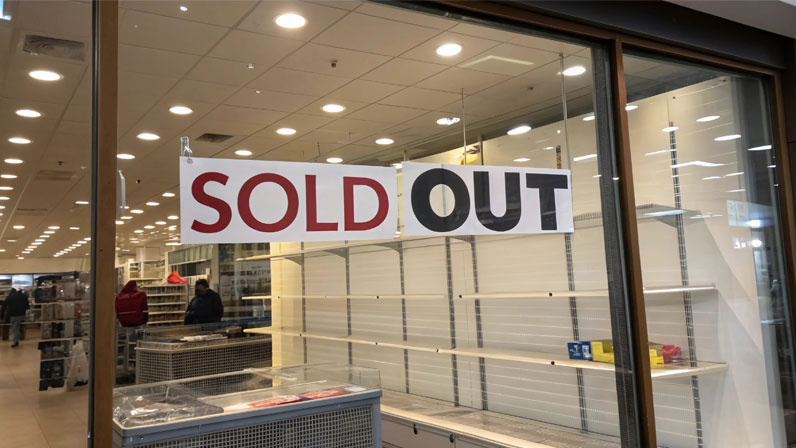The holiday shopping season brings both opportunity and risk for retailers. With online sales, retail sales, and social commerce channels all spiking at once, businesses face the challenge of keeping inventory accurate across every platform. Overselling happens quickly when Warehouse Management Systems (WMS) and Order Management Systems (OMS) aren’t aligned, leading to frustrated customers and costly cancellations. By integrating these systems, companies gain the visibility needed to handle multi-channel marketing campaigns, manage real-time inventory, and deliver on customer expectations. This alignment is the foundation for success during peak season, ensuring brands can scale confidently while avoiding the pitfalls of overselling.
Key Points
- Overselling during holiday sales damages customer trust and profitability.
- Aligning Warehouse Management Systems (WMS) with Order Management Systems (OMS) provides accurate, real-time inventory management.
- Real-time sync, smart allocation rules, and exception handling are critical for peak season success.
- Multi-channel marketing and social commerce demand inventory accuracy across every platform.
- Proper alignment ensures smoother online sales, higher retail sales, and better customer experiences.
The holiday sales season is the most exciting—and stressful—time of the year for retailers. Customers shop across multiple channels, from websites and apps to social platforms and in-store events. While retail sales hit their peak, businesses are under intense pressure to keep operations smooth. One of the biggest risks during this time is overselling: allowing customers to buy items that are no longer available.
Overselling doesn’t just mean lost revenue. It damages trust, drives up returns, and creates negative brand sentiment. In today’s world of multi-channel marketing and social commerce, customers have endless options. If one brand can’t deliver, shoppers will simply move to a competitor.
Why Overselling Happens During Peak Season
Overselling often occurs when there’s a gap between what’s available in the warehouse and what’s shown online. During holiday sales, that gap widens due to:
- High demand: Products sell out in minutes, especially with flash sales or viral social commerce campaigns.
- Multiple channels: Sales may occur simultaneously across your website, Amazon, Walmart Marketplace, TikTok Shop, Instagram, and in-store. Without aligned systems, each channel may oversell the same inventory.
- Returns and cancellations: Customers frequently change their minds during the holidays. Without real-time visibility, returned inventory may not be updated quickly enough.
For example, a retailer may have 100 units of a popular toy in stock. Without real-time alignment between WMS and OMS, both the website and TikTok Shop might sell 100 units each, resulting in 200 orders. That creates customer frustration, emergency refunds, and potentially damaging online reviews.
The Roles of WMS and OMS
To understand the solution, let’s revisit what these systems do:
- Warehouse Management System (WMS): Manages inventory inside the warehouse. It tracks product locations, movements, counts, and fulfillment processes.
- Order Management System (OMS): Manages customer-facing transactions. It processes orders, allocates inventory, and triggers fulfillment activities.
Without alignment, the WMS knows what’s available but the OMS doesn’t—and customers may see inaccurate availability online. Aligning these systems ensures your OMS pulls directly from WMS data, giving a real-time picture of sellable stock.
Technical Walkthrough: Aligning WMS and OMS
Step 1: Create a Single Source of Truth
The first step is to establish one master record for inventory. Typically, the WMS should act as the source of truth since it tracks physical stock. The OMS must integrate directly with the WMS to ensure customer-facing channels only display real-time data.
How to implement:
- Use API connections or middleware to sync WMS and OMS.
- Eliminate manual spreadsheets or batch uploads that cause delays.
- Ensure every sales channel (e-commerce site, marketplaces, and social commerce platforms) is connected to this unified system.
Step 2: Enable Real-Time Inventory Sync
Batch updates every hour might work in low-volume months, but during peak season, inventory can sell out in seconds. To avoid overselling, syncing must happen in near real time.
Best practice:
- Use event-driven architecture where each change in inventory triggers an update.
- Configure safety stock buffers to account for lag between system updates.
- Set up monitoring dashboards to detect sync failures instantly.
Step 3: Apply Smarter Allocation Rules
When selling across multiple channels, allocation rules help control where inventory goes. This is essential for businesses running multi-channel marketing campaigns or selling on multiple marketplaces.
Examples of allocation rules:
- Reserve stock for high-priority channels, such as your own website.
- Prevent double allocation by marking items “committed” once they’re included in an order.
- Enable partial fulfillment logic so orders can be split across warehouses if needed.
Step 4: Build Exception Handling Workflows
Even with integration, unexpected issues occur: damaged goods, lost shipments, or miscounted stock. Without exception handling, these discrepancies can snowball into overselling.
Tips:
- Automate alerts when mismatches occur between WMS and OMS.
- Assign warehouse staff to resolve discrepancies before orders are impacted.
- Develop contingency rules, such as rerouting orders to another warehouse.
Step 5: Test Before the Holidays
Don’t wait until Black Friday to test your integration. Stress-test your systems in advance with simulated scenarios, including:
- High-velocity flash sales driven by social commerce ads.
- Simultaneous online sales across multiple platforms.
- Handling of mass returns after major promotions.
These dry runs help reveal weak points so they can be fixed before real customers are impacted.
The Bigger Picture: Why Alignment Matters Beyond Inventory
Aligning WMS and OMS is about more than avoiding overselling. It creates the foundation for operational excellence in areas like:
- Customer Experience: Accurate stock visibility means fewer cancellations and happier customers.
- Scalability: As your business grows into new channels or markets, aligned systems make expansion easier.
- Omni-Channel Success: Modern retail sales strategies require consistent service across brick-and-mortar, e-commerce, and social commerce. WMS/OMS alignment makes that possible.
Connecting the Dots with Multi-Channel Marketing and Social Commerce
Today’s shoppers move fluidly between platforms. They may discover your brand through TikTok, check reviews on Instagram, and finalize purchases on your website. For businesses running multi-channel marketing, this means inventory must be accurate everywhere, not just on one channel.
Example scenario:
A skincare brand runs a holiday promotion on TikTok Shop while also advertising on Instagram and Google. Without aligned systems, TikTok Shop may sell items already committed to website orders. Customers experience cancellations, and the campaign’s ROI drops.
By ensuring the OMS integrates directly with the WMS, the brand can confidently run campaigns across all channels, knowing that each platform reflects true stock availability.
Inventory Management as the Core of Holiday Success
At the heart of this alignment is inventory management. The holiday season exposes weaknesses in inventory practices because order volume spikes dramatically. Businesses that rely on outdated manual methods or disconnected systems risk major losses.
Key elements of strong inventory management during holiday sales:
- Cycle Counting: Frequent checks to ensure physical inventory matches system records.
- Automated Replenishment: Setting reorder points so stock never runs too low.
- Forecasting tied to Marketing: Aligning inventory with planned multi-channel marketing campaigns.
By combining these practices with WMS/OMS integration, businesses ensure they’re not just selling, but selling smart.
Key Takeaways
- Overselling is a major risk during the holiday season, especially with multi-channel marketing and social commerce driving rapid demand.
- Aligning WMS and OMS creates a single source of truth for inventory management and prevents errors that frustrate customers.
- Real-time sync, smart allocation rules, and exception handling are essential during peak season.
- Stress testing before the holidays ensures systems are ready for surging online sales and record-breaking retail sales.
- Alignment doesn’t just prevent overselling—it enables growth across channels and builds trust with customers.
How Jillamy Can Help
At Jillamy, we specialize in helping businesses prepare for the pressures of peak season. Our advanced warehousing and inventory management solutions are built to integrate seamlessly with your existing systems, ensuring that WMS and OMS alignment is never an obstacle.
Whether your brand is scaling into social commerce, expanding online sales, or boosting retail sales through multi-channel marketing, Jillamy provides the support you need. Our services include:
- Nationwide fulfillment centers with real-time visibility.
- Multi-warehouse locations to speed up delivery.
- Packaging and kitting services to streamline order fulfillment.
- Strategic proximity to the Port of Philadelphia for efficient inbound and outbound operations.
When the holiday sales rush arrives, you can’t afford errors. Jillamy ensures your inventory stays accurate, your systems stay aligned, and your customers stay happy. Reach out to Jillamy today to see how our fulfillment experts can help you prepare for peak season and prevent costly overselling





